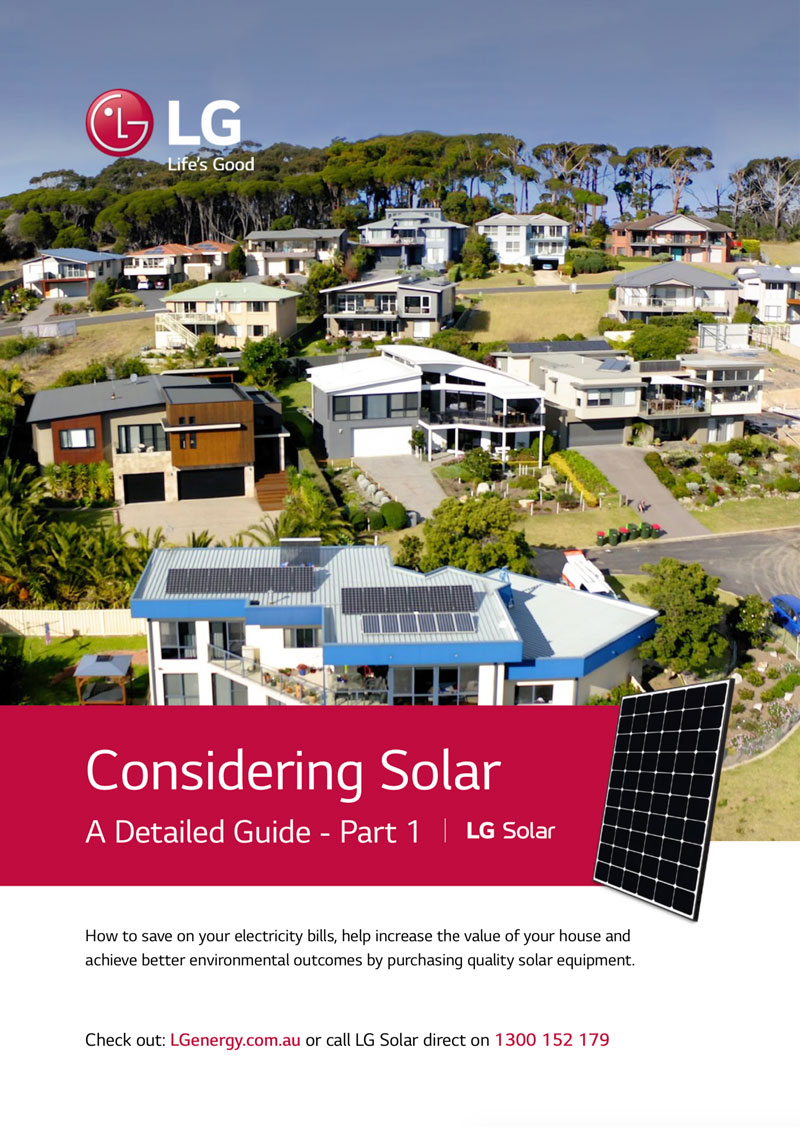Some Solar Pressure tricks of the trade – know them before they get applied.
- High pressure sales tactics - buy today and you will get a special rebate is one of the most common pressure tactics. If the deal is so good, it deserves proper examination. Do not sign and ask for time to consider the deal, ALWAYS.
- The rebate is ending next week - is another favourite sales line in solar. While this was true in years gone past when rebates changed regularly. The key solar rebate being the solar certificates is now a consistent scheme and there is a sudden deadline is not very likely. Ask for any such claim to given to you in writing and check it out on the net or call your local authorized LG solar installer.
- The Big System push – some companies will advise you on buying a larger solar power system and tell you that it will reduce your electricity bill to Zero. Be wary of that claim. A decent size solar system can reduce you electricity bill significantly, but a Zero bill is quite unlikely, as solar systems do not work at night and cannot take away your nightly electric consumption. Understand the solar system generation offset with feed-in-tariff and your consumption in detail before you go for any such claim. Try our system income calculator
- Install the system in any direction, solar works in any direction, as long there is light. Some companies follow the unethical practice of installing solar systems on the South / South West direction on the roof due to lack of roof space availability, or because this is the area with the easiest access. Only consider the North, North East and North Western roofs. South roofs will need special North facing tilt frames to work.
- Cheap Price Offer – some companies offer you a very economical quote as compared some other solar companies. They seemed to have installed lots of systems and offer long term warranties. What could go wrong? They usually give you a good plausible story why their solar system is so cheap, like “We buy direct from overseas manufacturers” or “We are buying in big volumes and pass the saving on” or “We are just running a special and this is one of the last systems left”. Please do not get swayed by it.
- Finally some solar companies offer no deposit finance or a higher than average feed in tariff.
Remember that if the solar system is offered very cheap then there is a good possibility of lower quality materials being used to offset costs. The system might not be as efficient as claimed or worse fails to last for any prolonger period. In Australia in 2012 over 150 solar installers and manufacturing companies like Sunny Roo or Aerosharp went into liquidation. http://www.adelaidesolarrepairs.com.au/Sunny-Roo-Inverter-Repairs.html
One of the reasons for solar companies going into liquidation is to avoid growing warranty claims.
http://www.cbs.sa.gov.au/assets/medicomms/mrelease_unleashAdministration.pdf
http://www.adelaidenow.com.au/news/south-australia/failed-unleash-solar-boss-dion-perdikoyiannis-sets-up-shop-in-us/story-e6frea83-1226593502384
http://www.adelaidenow.com.au/business/sa-business-journal/sunrise-solars-collapse-linked-to-unleash-solar-failure-16-jobs-lost/story-e6fredel-1226607037121
We recommend to use solar panel manufacturers you have heard of, and that these manufacturers have multiple product streams, so your long term warranty has some meaning. For inverters stick with the biggest companies in the industry, the ones that have local warranty/service centres.
Please read these contracts carefully. Whiles there are some decent offers on the market; there are also others where you pay the cost of interest or cost of the extra feed in tariff via the system price, which is overpriced. It’s not really such a good deal in that case.

